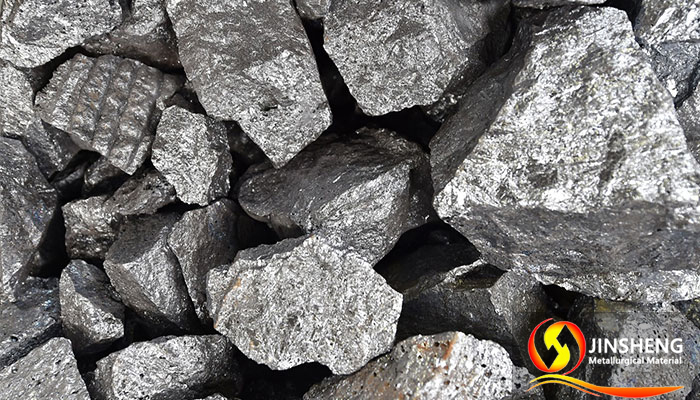How is industrial grade silicon manufactured
2025-07-18
Silicon, the second most abundant element in the earth's crust, is widely used in metallurgy, aluminum alloys, chemicals, batteries, solar energy and electronics. In this huge industrial chain, Metallurgical Grade Silicon (MG-Si) plays the role of basic raw material, and is the starting point of all high-purity silicon materials (such as polysilicon and electronic grade silicon).
So, how is Metallurgical Grade Silicon extracted from natural quartz ore? In this article, we'll take you on a deep dive into the complete production process of industrial silicon.

What is metallurgical grade silicon?
Metallurgical grade silicon is a non-ferrous alloy raw material rich in silicon, with a silicon content of between 95% and 99.5%. It is usually in the form of gray metallic lumps, but can also be processed into granular or powdered products upon request.
Despite the name “silicon metal”, metallurgical-grade silicon is not a pure metal, but a mixture of iron (Fe), aluminum (Al), calcium (Ca) and other impurities. The content of these impurities determines its scope of application and market value.
The main uses of metallurgical grade silicon include: steel deoxidation, aluminum alloy reinforcement, ferrosilicon alloy raw materials, chemical raw materials, battery additives, refractory materials, and primary photovoltaic and semiconductor materials.
Raw Material Preparation: From Quartz to Reactive Mixes
The primary raw material for metallurgical grade silicon is quartz (SiO₂) or quartzite. These minerals contain high-purity silicon dioxide, which is the main form of silicon found in nature.
The reduction process of silicon dioxide has a high energy threshold due to its very stable Si-O bonds. In order to realize the reduction reaction, quartz needs to be thoroughly mixed with carbon-containing substances (e.g., coke, coal, wood chips, charcoal, etc.) to form a reaction mixture. These carbon sources are able to react with oxygen at high temperatures to release pure silicon.
Core Process: Carbothermal Reduction in an Electric Arc Furnace
The core manufacturing process for industrial silicon is the Carbothermal Reduction (CR) reaction in a submerged electric arc furnace.
High-temperature reaction environment
The temperature inside the furnace is typically maintained at 1500 to 2000°C. The furnace relies on electrodes to conduct a strong electric current into the charge, creating a high-temperature arc zone. This temperature is sufficient to drive the following main reaction: SiO₂ (solid) + 2C (solid) → Si (liquid) + 2CO (gas).
In the charge, the reduction reaction between silica and carbon takes place, producing liquid silicon and carbon monoxide gas.
Multi-stage reaction mechanism
The furnace is not a homogeneous reaction environment: High temperatures in the central area lead to rapid reactions and the formation of large quantities of liquid silicon.
Lower temperatures in the peripheral areas may lead to the formation of the intermediate gas SiO (Silicon Oxide) .
These gases can either be reacted further within the furnace to form silicon, or escape from the furnace to form the by-product Silica Fume.
Maintaining the Porosity of the Charge
In order to ensure a smooth flow of gases, the reactant layer must be well ventilated. If the charge layer is too dense, the reduction efficiency will be reduced and energy consumption will increase.
Tapping and Preliminary Refining
After the liquid silicon has converged at the bottom of the furnace, it is tapped through the furnace opening and diverted into the ladle or crucible. At this point, the silicon is usually in a high-temperature liquid state with impurities.
In subsequent processing, the producer carries out preliminary refining to control the content of aluminum, calcium and other impurities and to ensure that the product meets the preset chemical specifications.
Cooling, molding and crushing
After the initial refining, the liquid silicon is poured into molds and cooled to form ingots.
After cooling is complete, the ingots will be crushed by mechanical crushing equipment, screened according to different particle sizes (e.g. 10-100mm), packaged and prepared for shipment.
Key Characteristics and Quality Control of Metallurgical Grade Silicon
The quality of metallurgical grade silicon is measured by the following aspects: Si content (usually 95% to 99.5%); content of impurities such as Fe, Al, and Ca; particle size specifications and particle shape; and batch-to-batch compositional stability.
Manufacturers usually conduct spectral analysis and physical testing on each batch of silicon, and issue a quality report (COA) to ensure that customers can use the product without worry.
Uses of Metallurgical Grade Silicon Metal
Iron and steel industry
Added to steel as a deoxidizer to effectively remove oxygen and enhance the strength and toughness of steel.
Aluminum alloy manufacturing
Used to improve the strength, corrosion resistance and casting performance of aluminum alloy.
Chemical industry
Used as an important raw material for the preparation of silane, silicate, silicone oil, silicone resin and other chemical products.
Battery Materials
Used as an additive for lithium-ion battery anodes to enhance battery capacity and cycle life.
Photovoltaic and semiconductor industry
Although metallurgical-grade silicon is not pure enough to be used directly in high-end electronics, it can be used as a purification precursor for the production of polysilicon or chemical-grade silicon.
Refractories
Widely used in refractory bricks and composites for high-temperature furnace hearths, ceramics, and glass.
Conclusion
From natural quartz ore to high-purity silicon ingots, the production process of metallurgical-grade silicon integrates multidisciplinary technologies such as high-temperature physicochemical reactions, materials science and process control. As the “source process” of the silicon material industry chain, its quality and stability directly affect the performance and cost of downstream applications.
As the global demand for green energy, energy storage, electric vehicles and smart electronic products continues to grow, the importance of metallurgical-grade silicon is becoming more and more prominent, which also brings new opportunities for industrial upgrading and the development of environmental protection technology.00






